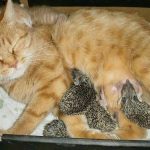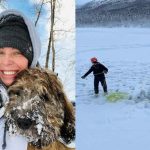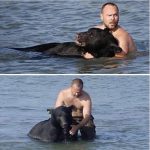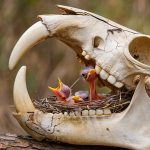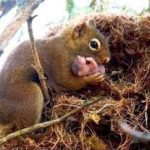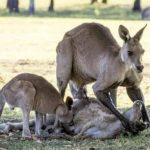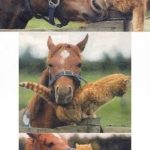Platy of the Misty River
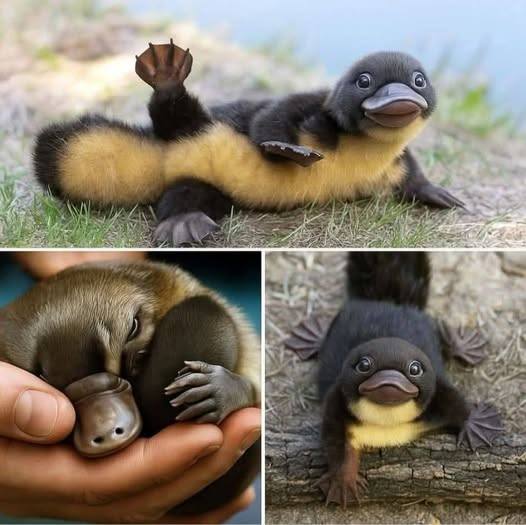
In a quiet corner of the world, where the eucalyptus trees whisper above winding rivers and the moonlight dances gently on rippling water, a small miracle stirs beneath the earth. Hidden in a soft burrow, nestled in a cradle of damp leaves and mother’s warmth, a baby platypus emerges into existence — not with a cry, but with a breath, tender and silent.
In a quiet corner of the world, where the eucalyptus trees whisper above winding rivers and the moonlight dances gently on rippling water, a small miracle stirs beneath the earth. Hidden in a soft burrow, nestled in a cradle of damp leaves and mother’s warmth, a baby platypus emerges into existence — not with a cry, but with a breath, tender and silent.

It is a creature of contradiction, of magic, of mystery — so peculiar, so unlike anything else, that for centuries, those who heard of its features believed it to be a hoax. A mammal that lays eggs? A duck-billed, fur-covered animal with webbed feet and venomous spurs? Surely, this must be nature’s prank. But it is no joke. It is, instead, one of evolution’s greatest poems — strange, soft, and entirely sincere.
The baby platypus is blind at birth, a tiny bundle of fur and ancient instinct. Its skin is thin and pink, its body curled like a question mark, asking quietly what world it has been born into. It doesn’t feed from teats — there are none. Instead, it drinks its mother’s milk as it seeps from her skin, flowing into the fur for the baby to lap, gently, like sipping from the surface of a still pond. There is something ancient in this act, something older than science, older than logic — a tender ritual passed down through eons of survival.
As it grows, the baby platypus begins to explore. First, it shuffles in the darkness of the burrow, its limbs uncertain but determined. Then, as weeks pass, it learns the rhythm of water — not in leaps, but in glides. Its webbed feet spread like fans beneath the surface. Its paddle-like tail steers it silently. Its eyes remain closed, but it feels everything — the cool embrace of the current, the whisper of pebbles below, the hum of life pulsing all around.
To see it swim is to watch a dream move — part duck, part beaver, part otter, and yet none of these things. It is its own story. And within its soft, unassuming body lies a hidden sting, a venomous spur that reminds the world: I am gentle, but not defenseless. I may be small, but I am a survivor of time itself.
The platypus does not roar or parade. It doesn’t soar through skies or command the savannah. But it tells a quieter story — one of resilience, of strange beauty, of wonder that refuses to fit into neat categories. It is a living paradox, a defiance of labels, a lesson that nature does not build by blueprint, but by brilliance.
And so the baby platypus grows — slowly, steadily, and silently — beneath the southern stars. It will one day paddle through forested streams, its sensitive bill sensing the faintest pulses of shrimp and insects, its fur glistening beneath the rain. But for now, it is just a tiny miracle, wrapped in mystery and mother’s care.
A creature that looks as if it were sketched by the hand of a dreaming child — and yet it is real. Realer than legends, more magical than myths. The baby platypus is not just an animal. It is proof that the world still holds secrets. That not everything has been explained. That there are corners of the Earth where the fantastical still lives — breathing, swimming, growing — right beneath our feet.
A masterpiece of life’s imagination, quietly waiting to be seen.
It is a creature of contradiction, of magic, of mystery — so peculiar, so unlike anything else, that for centuries, those who heard of its features believed it to be a hoax. A mammal that lays eggs? A duck-billed, fur-covered animal with webbed feet and venomous spurs? Surely, this must be nature’s prank. But it is no joke. It is, instead, one of evolution’s greatest poems — strange, soft, and entirely sincere.
The baby platypus is blind at birth, a tiny bundle of fur and ancient instinct. Its skin is thin and pink, its body curled like a question mark, asking quietly what world it has been born into. It doesn’t feed from teats — there are none. Instead, it drinks its mother’s milk as it seeps from her skin, flowing into the fur for the baby to lap, gently, like sipping from the surface of a still pond. There is something ancient in this act, something older than science, older than logic — a tender ritual passed down through eons of survival.
As it grows, the baby platypus begins to explore. First, it shuffles in the darkness of the burrow, its limbs uncertain but determined. Then, as weeks pass, it learns the rhythm of water — not in leaps, but in glides. Its webbed feet spread like fans beneath the surface. Its paddle-like tail steers it silently. Its eyes remain closed, but it feels everything — the cool embrace of the current, the whisper of pebbles below, the hum of life pulsing all around.
 To see it swim is to watch a dream move — part duck, part beaver, part otter, and yet none of these things. It is its own story. And within its soft, unassuming body lies a hidden sting, a venomous spur that reminds the world: I am gentle, but not defenseless. I may be small, but I am a survivor of time itself.
To see it swim is to watch a dream move — part duck, part beaver, part otter, and yet none of these things. It is its own story. And within its soft, unassuming body lies a hidden sting, a venomous spur that reminds the world: I am gentle, but not defenseless. I may be small, but I am a survivor of time itself.
The platypus does not roar or parade. It doesn’t soar through skies or command the savannah. But it tells a quieter story — one of resilience, of strange beauty, of wonder that refuses to fit into neat categories. It is a living paradox, a defiance of labels, a lesson that nature does not build by blueprint, but by brilliance.
And so the baby platypus grows — slowly, steadily, and silently — beneath the southern stars. It will one day paddle through forested streams, its sensitive bill sensing the faintest pulses of shrimp and insects, its fur glistening beneath the rain. But for now, it is just a tiny miracle, wrapped in mystery and mother’s care.
A creature that looks as if it were sketched by the hand of a dreaming child — and yet it is real. Realer than legends, more magical than myths. The baby platypus is not just an animal. It is proof that the world still holds secrets. That not everything has been explained. That there are corners of the Earth where the fantastical still lives — breathing, swimming, growing — right beneath our feet.
A masterpiece of life’s imagination, quietly waiting to be seen.
